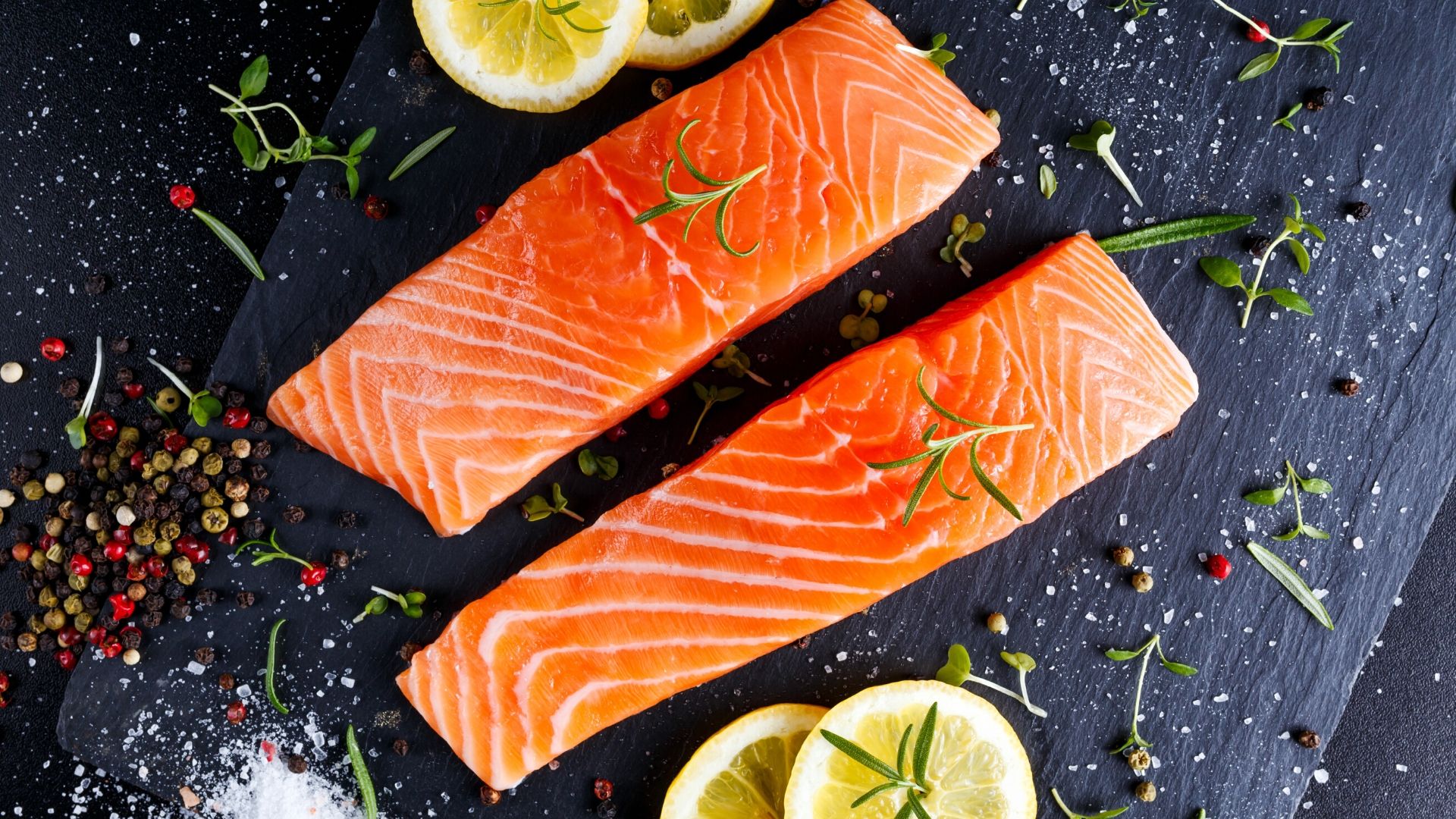Whether baked, smoked or eaten raw, salmon is a delicious dish characterized not only by its flavor and its characteristic color but also by its richness in omega 3 fatty acids. The salmon "Salmo salar" that comes to our tables mainly comes from Norway (which holds the world record in production), Scotland, Chile, Canada, and Alaska. In recent years, thanks also to the spread of sushi and sashimi typical of Japanese cuisine, the consumption of salmon meat has increased enormously, especially as regards farmed salmon.

The farmed salmon
Salmon from farms, therefore not caught wild, has a great drawback: a very high potential for toxins, pollutants, and antibiotics, as well as an imbalance between omega 3 and omega 6 fats, with a tendency to gave inflammatory effects on the body.
Only on the so "captivating" salmon color, we could make an entire article... the meats, characterized by a uniform flavor, can be colored with chemical dyes since the tissues of the farmed salmon are basically greyish. In fact, the fish is fed with industrial feeders (soy, corn, or low-quality animal feed) and access to krill and shrimp rich in astaxanthin is totally lacking, that portentous pigment with an antioxidant effect that would naturally give the characteristic red-orange color. It is therefore good to go into the origin of the fish before choosing to eat it, even if the offer has become increasingly accessible!
The wild salmon
On the other hand, the qualities of wild salmon meat are completely different, and the price is different too! Salmon that lives wild has a lower content of saturated fats and is however rich in those precious, highly bioavailable omega 3 fatty acids. These good fats:
- help protect cardiovascular health,
- have anti-inflammatory properties,
- high antioxidant power is given by the astaxanthin,
- a high presence of vitamin D.
How to choose salmon
Over the years, numerous investigations into the quality of salmon have been carried out by various bodies, but unfortunately, they are often undermined and set aside by the power of the commercial business.
If you love sushi or want to continue eating delicious salmon, my advice is to be careful with what you choose, as it becomes increasingly difficult to distinguish the two qualities. Surely the price can be a differentiating element, but it is not always enough! The salmon market is now growing very fast. The taste of salmon meat remains something special and has now become much more accessible than it used to be when it was considered a "noble" fish, a "luxury" dish. Today it is within everyone's reach.
While considering this (apparent) advantage, it is good to research the origins of the fish product and the fishing methods before purchasing them at the supermarket, always favoring sustainable fishing (such as rod fishing, in controlled periods) of "wild-caught" specimens and which guarantees to be in front of a healthy animal, even if we have to spend something more.
In the case of the choice of farmed salmon, it should be verified that the maximum guarantees of the breeding processes with all traceability, from the origin of the farm to the food regimes and to the processing and drying procedures (in the case of smoked meats), are present in transparency.
